¡Saludos a todos mis AQUAmigos de HIVE!
Esta especie de insecto volador sí que tiene una primera designación: AVISPA, pues su abdomen alargado y separado del tórax y cabeza por una unión o división muy visible, en comparación con sus parientes cercanos las "abejas". El cuerpo de este espécimen es de un color negro azabache o azul intenso brillante con sus alas alargadas y venosas, también resalta el color amarillo de sus antenas.
This species of flying insect does have a first designation: WASP, as its abdomen is elongated and separated from the thorax and head by a very visible union or division, compared to its close relatives the "bees". The body of this specimen is of a jet black or bright intense blue color with its elongated and veined wings, also highlights the yellow color of its antennae.
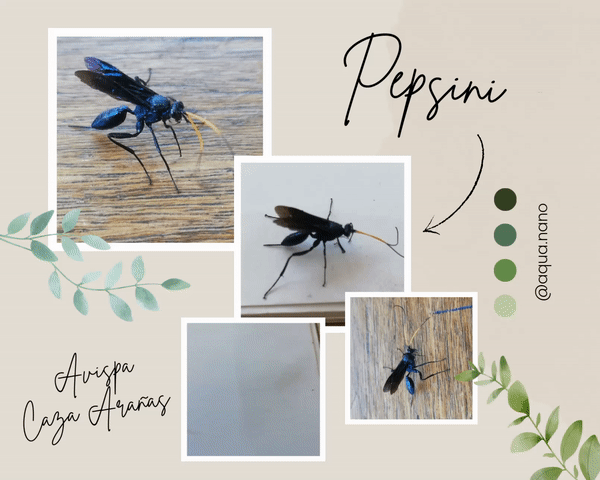

In general, this wasp has "carnivorous" eating habits, since most wasps of the Family Pompilidae feed on chelicerate arthropods of various sizes, from small jumping spiders to the largest and most fearsome tarantulas . The technique consists of arriving from a low and fast flight on a spider that has its eyes on its surroundings and not on itself, for which the attack of the "spider wasp", name common of the Subfamily Pepsinae, is surprising and quickly injects its neurotoxin into its prey, which remains immobilized and is later carried to its nest (that of the wasp).
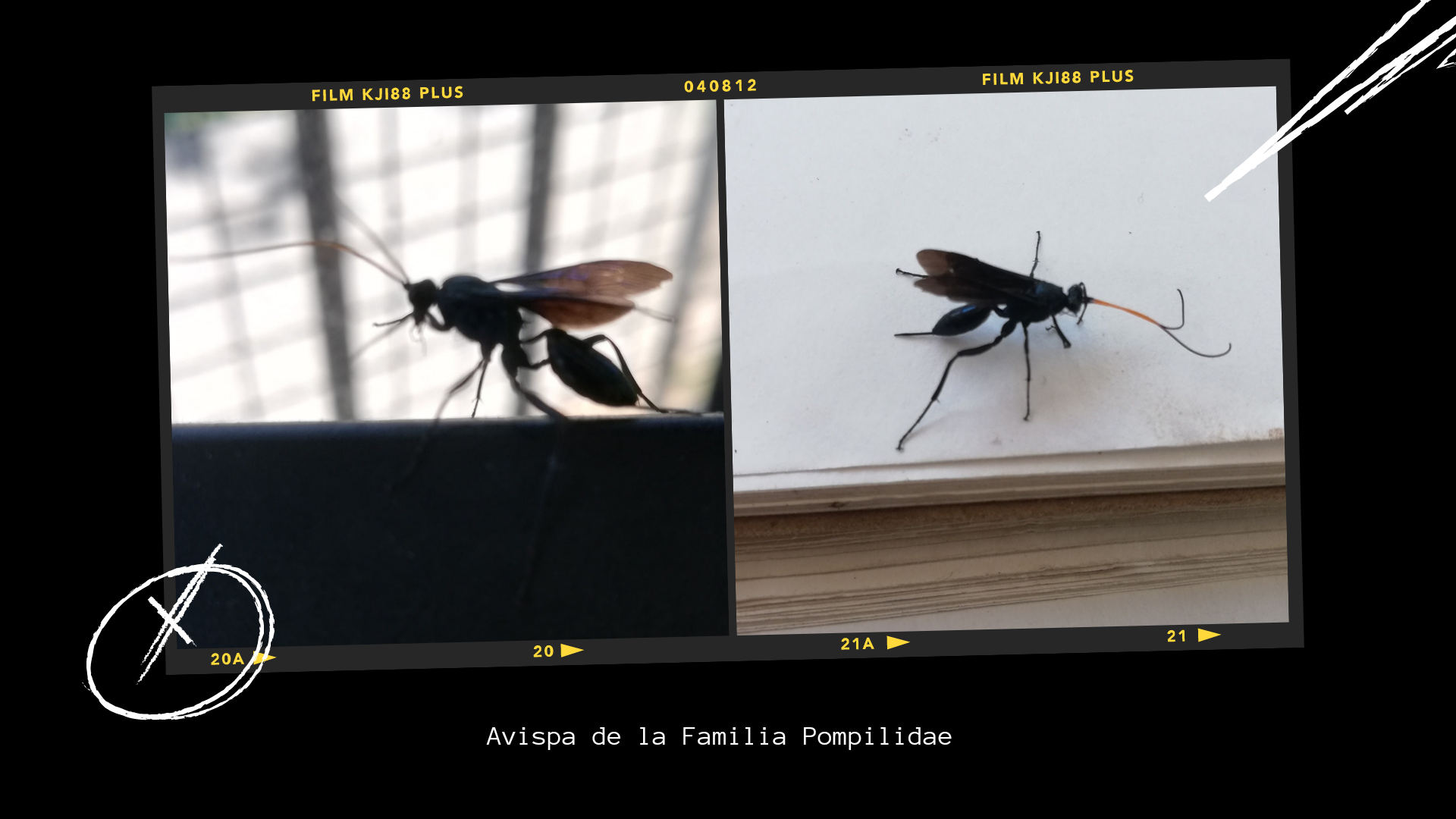

As seen in the photographs, the female wasp of the Genus Pepsis has an extension on her abdomen that corresponds to her ovipositor organ, placing an egg inside the recently captured spider. When the egg hatches, the small larva will have the food and nutrients necessary for its development during this larval stage and after a few days become an adult spider wasp. In this Bulletin I can report the existence of 137 species of wasps of the Genus Pepsis that are distributed throughout America, so it has been a challenge for me to assign the precise Species of this majestic specimen that I was able to photograph and take some short videos of her behavior on my notebook.
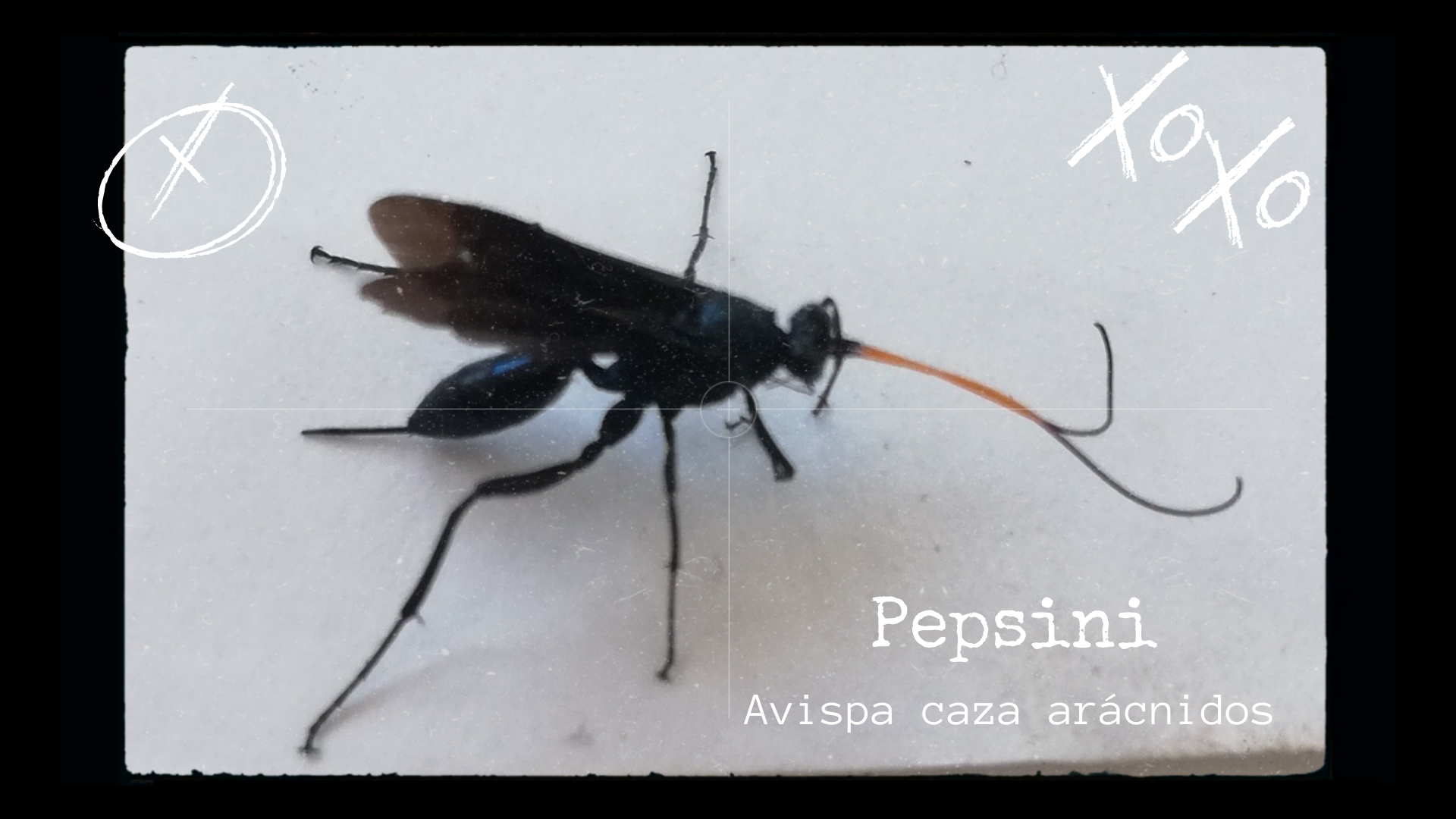

Another morphological characteristic of the Pepsini Wasp is its large hind legs, which it uses to firmly hold its prey while moving it towards its nest. It is considered a parasitoid wasp, since it takes advantage of the body of its prey to deposit its future generation of offspring.
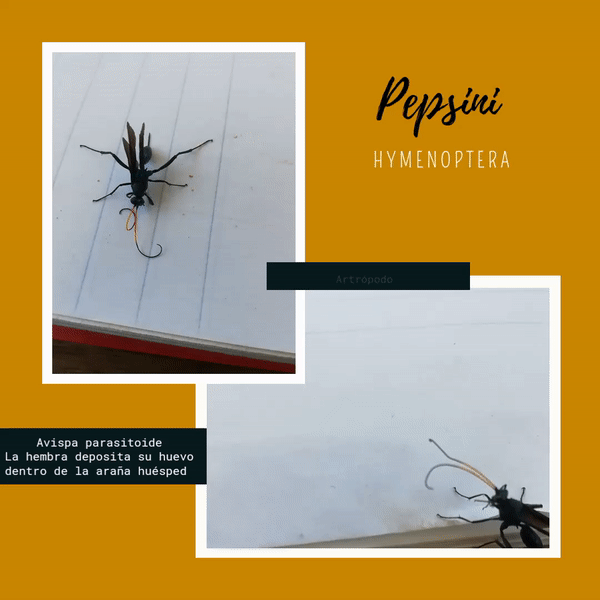

What strikes me about this type of wasp is the marked dimorphism that makes the female the great fighter and heroine for maintaining her species. The female has curved antennae, they have a poisonous stinger and they have an ovipositor system, while the male will be in charge of collecting nectar and pollen from the flowers.
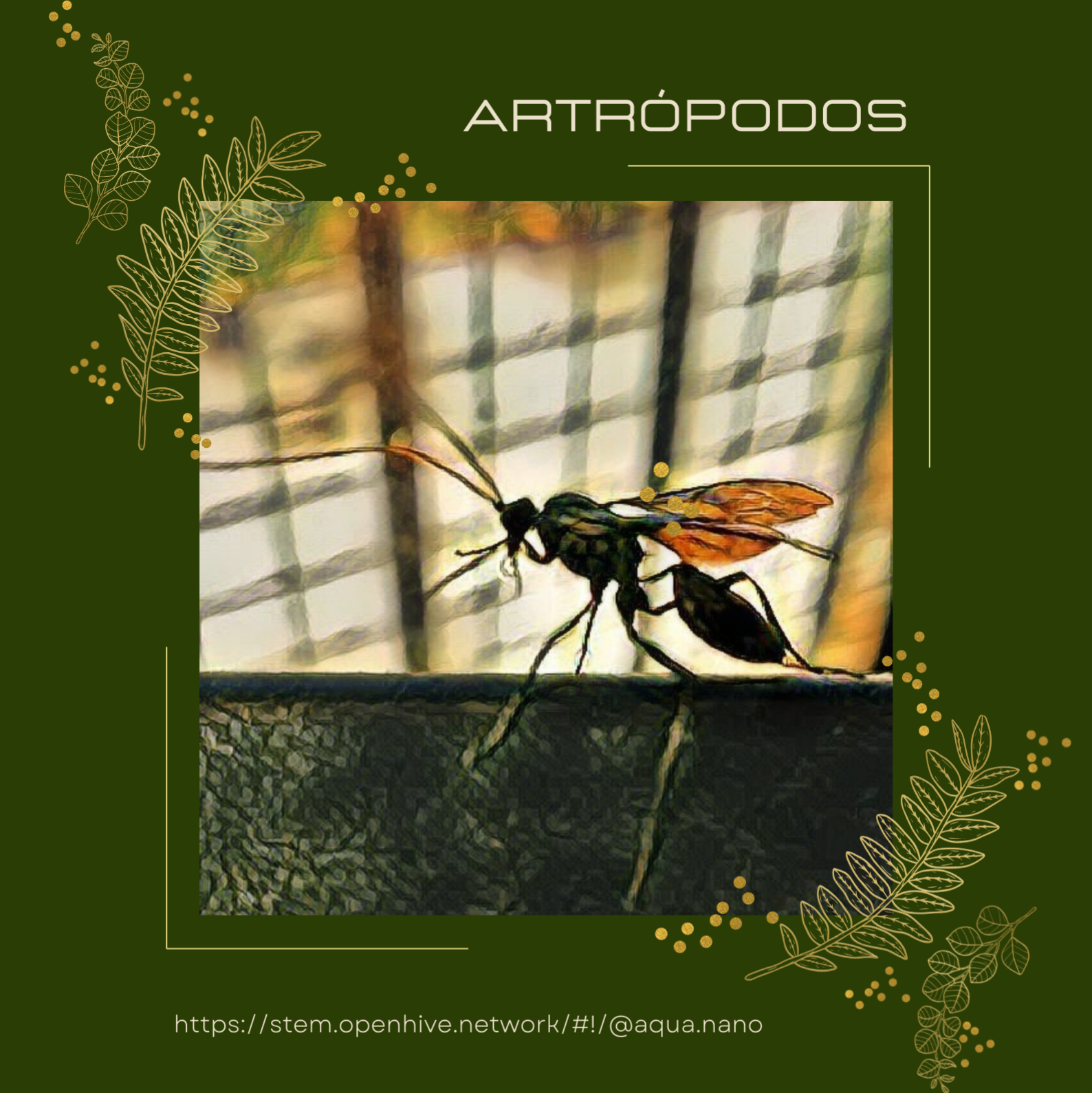

I like reading and looking for audiovisual information on everything related to AQUA and its closest environment, so I try to make sure that the text published by @aqua.nano is 100% original, providing a small analysis of the marine or terrestrial animal species that I present to you on my blog.
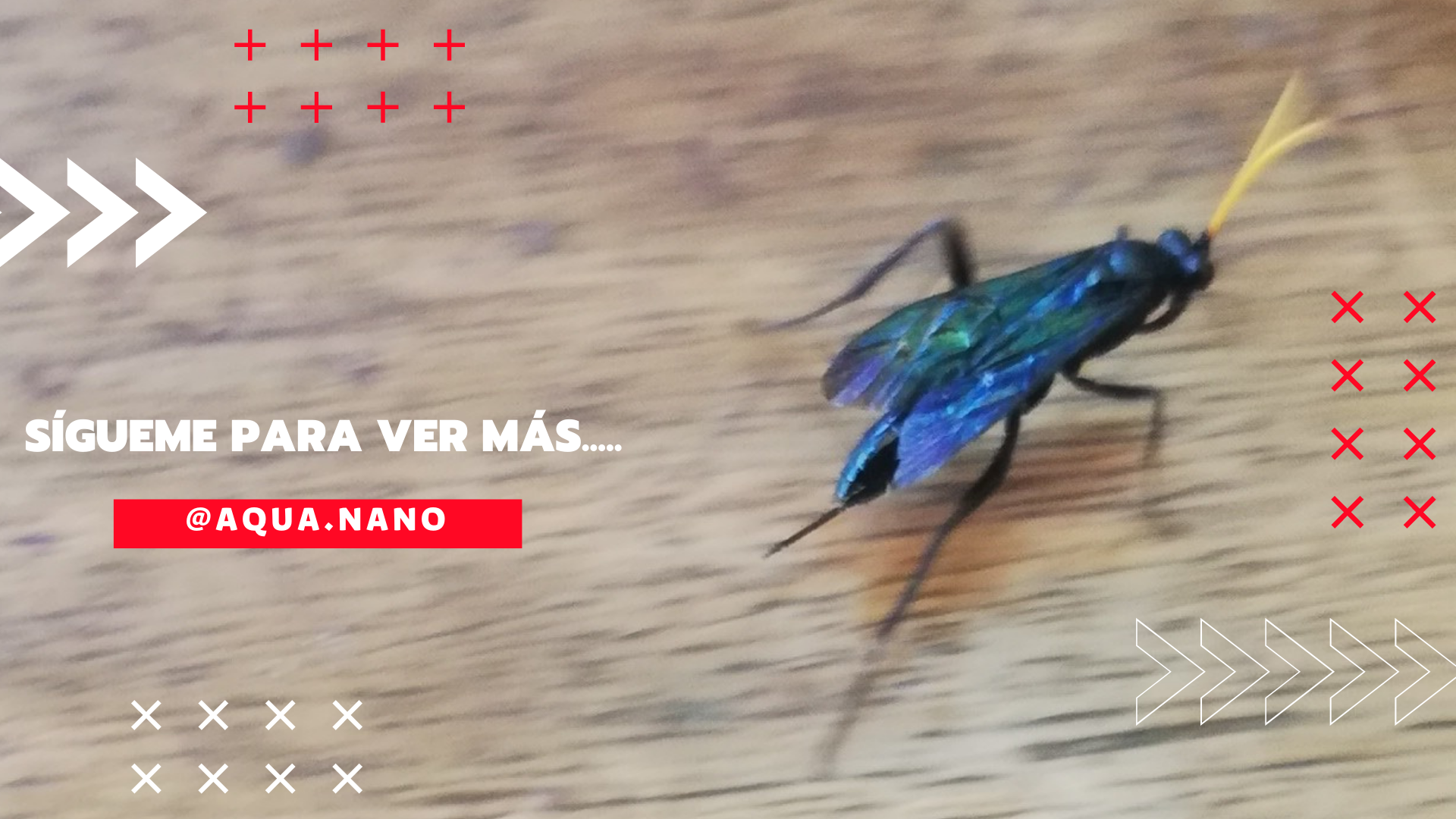
·) Avispas Caza Tarántulas
·) Diferencia entre avispa y abeja
·) Araneae
Las imágenes y vídeos que son CC0 Public Domain están indicadas con sus enlaces correspondientes para respetar los derechos de autor. El texto presentado en el Blog de @AQUA.nano es 100% original

·) Avispas Caza Tarántulas
·) Diferencia entre avispa y abeja
·) Araneae

Thanks for your contribution to the STEMsocial community. Feel free to join us on discord to get to know the rest of us!
Please consider delegating to the @stemsocial account (85% of the curation rewards are returned).
Thanks for using the STEMsocial app, which gives you stronger support. Including @stemsocial as a beneficiary could yield even more support next time.